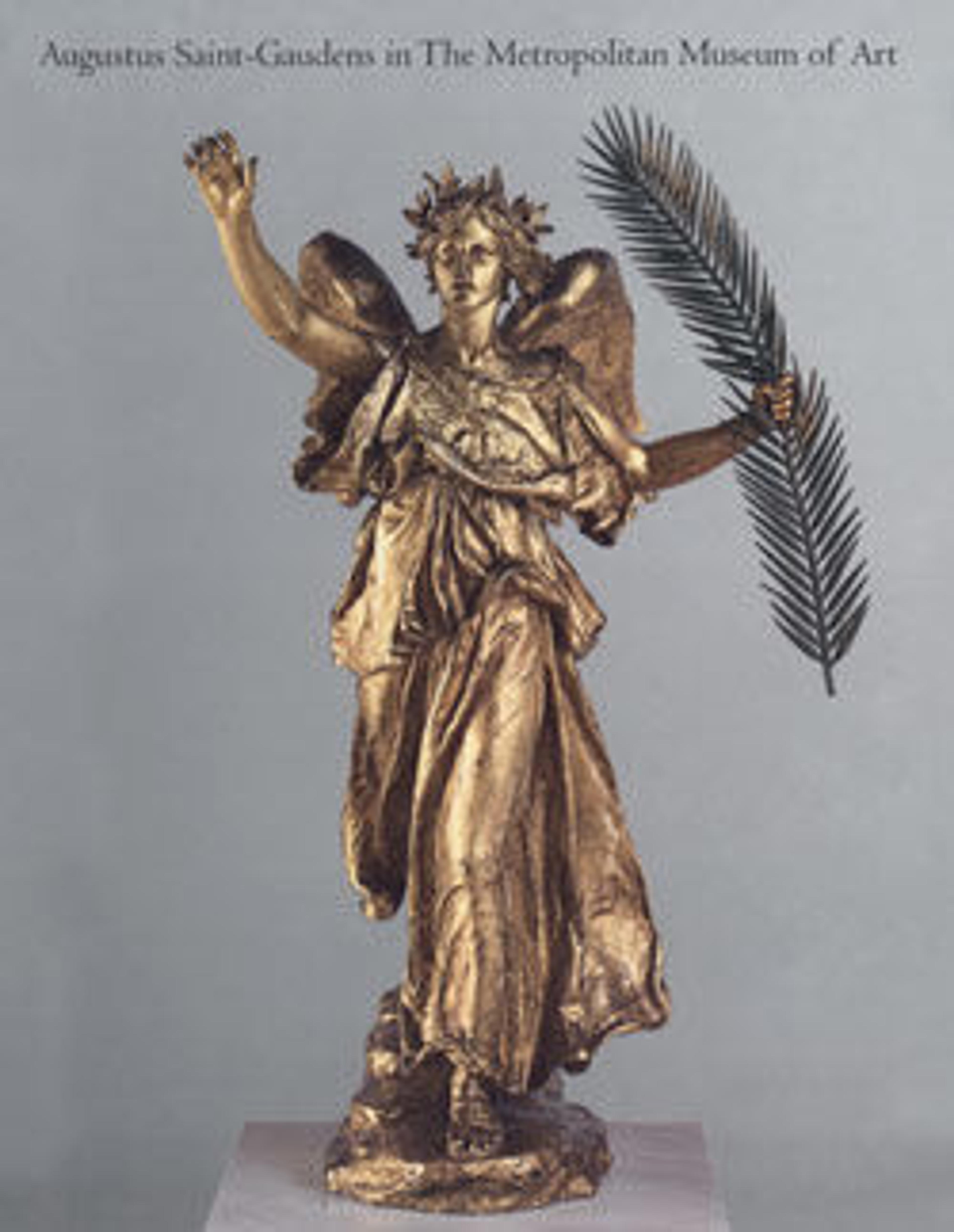George Washington Inaugural Centennial Medal
In winter 1888-89 Saint Gaudens received his first official medallic commission, from the Committee on Art and Exhibition of the Washington Centennial Celebration. The medal was to be the official souvenir for the centennial of George Washington’s swearing-in as first president of the United States on April 30, 1789 at New York’s Federal Hall.
Although he designed the medal, Saint-Gaudens turned its modeling over to his assistant Philip Martiny. The half-length profile portrait of Washington in Continental uniform on the front face of the medal harks back to the authoritative sculptural likenesses of the pater patriae by Jean Antoine Houdon, the full-length marble statue of 1792 in the State Capitol in Richmond, Virginia, which was in turn based on a life portrait from 1785. At the right are the fasces of majesty, the bundle of staves representing the United States and the axe and blade its military and executive power. Thirteen stars symbolizing the original states are evenly spaced near the edge. On the reverse, an American eagle with spread wings and arrows and an olive branch in its claws bears a shield with the inscription E PLVRIBVS VNVM (Out of many, one). At the lower left are a lengthy commemorative inscription and the shield of the shield of arms of New York City. Around the border are thirty-eight stars representing the number of states in the union in April 1889. The medal’s compositional format and technique are strongly indebted to the Renaissance medallic art Saint-Gaudens admired. (He collected plasters casts after Pisanello to display in his studio.)
The medal was cast by Gorham Manufacturing Company in an edition of 2000 bronze and 10 silver examples. Henry Gurdon Marquand, chairman of the Committee on Art and Exhibition and president of The Metropolitan Museum of Art donated two examples (90.18.1, .2) of this medal to the Museum in 1890. They were the first works by Saint-Gaudens to enter the collection.
Although he designed the medal, Saint-Gaudens turned its modeling over to his assistant Philip Martiny. The half-length profile portrait of Washington in Continental uniform on the front face of the medal harks back to the authoritative sculptural likenesses of the pater patriae by Jean Antoine Houdon, the full-length marble statue of 1792 in the State Capitol in Richmond, Virginia, which was in turn based on a life portrait from 1785. At the right are the fasces of majesty, the bundle of staves representing the United States and the axe and blade its military and executive power. Thirteen stars symbolizing the original states are evenly spaced near the edge. On the reverse, an American eagle with spread wings and arrows and an olive branch in its claws bears a shield with the inscription E PLVRIBVS VNVM (Out of many, one). At the lower left are a lengthy commemorative inscription and the shield of the shield of arms of New York City. Around the border are thirty-eight stars representing the number of states in the union in April 1889. The medal’s compositional format and technique are strongly indebted to the Renaissance medallic art Saint-Gaudens admired. (He collected plasters casts after Pisanello to display in his studio.)
The medal was cast by Gorham Manufacturing Company in an edition of 2000 bronze and 10 silver examples. Henry Gurdon Marquand, chairman of the Committee on Art and Exhibition and president of The Metropolitan Museum of Art donated two examples (90.18.1, .2) of this medal to the Museum in 1890. They were the first works by Saint-Gaudens to enter the collection.
Artwork Details
- Title: George Washington Inaugural Centennial Medal
- Artist: Augustus Saint-Gaudens (American, Dublin 1848–1907 Cornish, New Hampshire)
- Artist: Modeled by Philip Martiny (1858–1927)
- Date: 1889
- Culture: American
- Medium: Bronze
- Dimensions: Diam. 4 1/2 in. (11.4 cm)
- Credit Line: Gift of Henry G. Marquand, 1890
- Object Number: 90.18.1
- Curatorial Department: The American Wing
More Artwork
Research Resources
The Met provides unparalleled resources for research and welcomes an international community of students and scholars. The Met's Open Access API is where creators and researchers can connect to the The Met collection. Open Access data and public domain images are available for unrestricted commercial and noncommercial use without permission or fee.
To request images under copyright and other restrictions, please use this Image Request form.
Feedback
We continue to research and examine historical and cultural context for objects in The Met collection. If you have comments or questions about this object record, please contact us using the form below. The Museum looks forward to receiving your comments.
